Are you experiencing pins and needles and tingling in your thumb and first 2 fingers? Numbness when typing? Then you may have carpal tunnel syndrome!
What Is Carpal Tunnel Syndrome?
Carpal Tunnel Syndrome is pain that can occur in the wrist, hand, or forearm, due to compression of the median nerve as it passes through the carpal tunnel in the wrist. This pain may be accompanied by pins and needles, numbness, and feelings of weakness in the affected hand. The carpal tunnel is a small canal in the wrist composed of bones and ligaments. Several tendons pass through the carpal tunnel in addition to the median nerve, making this nerve susceptible to compression, and making Carpal Tunnel Syndrome the most common form of nerve entrapment in the body.
What Causes Carpal Tunnel Syndrome? What Are Common Symptoms?
Several different mechanisms can cause compression of the median nerve in the carpal tunnel. A common mechanism of injury is repetitive movements of the wrist, as seen in occupations requiring prolonged typing or writing. This can lead to inflammation of the tendons that pass through the carpal tunnel, which in turn can compress the median nerve. Inflammatory conditions such as rheumatoid arthritis can also put additional pressure through the carpal tunnel, as can the increased swelling and hormones circulating through the body in people that are pregnant. Carpal tunnel syndrome can also develop after a trauma (such as a wrist fracture or dislocation) or a surgery, which may lead to the development of lymphedema and increased swelling in the wrist. Carpal tunnel syndrome may also occur idiopathically, meaning there is no known cause. Finally, everyone’s individual anatomical make-up is slightly different, and some people can have a small carpal tunnel, predisposing them to a higher risk of developing Carpal Tunnel Syndrome.
Common symptoms of Carpal Tunnel Syndrome include:
- Pain in the wrist, hand and/or forearm that may be worse at night.
- Numbness, tingling and/or burning occurring in the wrist, palm of the hand, thumb, and/or the first two fingers.
- Weakness or clumsiness in the affected hand.
How Can Physiotherapy Help My Carpal Tunnel Syndrome?
Physiotherapy can help to treat both the direct causes of your pain, as well as contributing factors to why it developed in the first place. Your Strive Physiotherapist will conduct a thorough assessment consisting of an interview as well as a physical assessment to determine the cause of your symptoms. They may then employ manual therapies such as massage to the muscles of your forearm and hand, and joint mobilizations to the bones in the wrist. They may also use modalities such as Ultrasound, Shockwave and/or Acupuncture and Dry Needling. In the early stages of your recovery, your physiotherapist may recommend a splint to immobilize the wrist while it is healing.
You will be given a tailored exercise program which may include stretching, muscle strengthening and nerve mobilizations, to get you back to your regular activity. Your Physiotherapist may also look at your work or home office set-up to address any ergonomic factors that may have contributed to your Carpal Tunnel Syndrome, so that when your pain is gone, it stays that way!
How Can Massage Therapy Help My Carpal Tunnel Syndrome?
Massage therapy can also be used to treat both the direct and indirect causes of your Carpal Tunnel Syndrome. Your Strive Massage Therapist will work on a broader area of muscles contributing to your symptoms, helping to address postural compensations in the elbow, shoulder, and neck that may be contributing to your pain. Registered massage therapists are also trained in lymphatic massage, which can address lymphedema and swelling in the wrist that may have contributed to your Carpal Tunnel Syndrome. Massage therapists are also skilled in various neuromobilization techniques which may be underlying your pain and are an important component to your recovery. They will communicate with your physiotherapist to ensure both members of your team are working together to help you get back to your normal.
How Can Sports Medicine/Physiatry Help My Carpal Tunnel Syndrome?
In most cases, the conservative management described above is effective in helping you to overcome the symptoms of your Carpal Tunnel Syndrome and get back to your regular activities pain-free. However, in some cases you may need to see a sports medicine physician. Your Strive Physiatrist and Sports Medicine Physician will be able to order imaging, such as an x-ray or ultrasound, to determine if there are any additional injuries that may be slowing down the healing process, or in rare cases, a structural deformity or space-occupying lesion. They can also perform various specialized injections such as cortisone and provide medications both oral and topical, and make referrals to an orthopedic surgeon if necessary.
How Long Does It Take For Me To Recovery From My Carpal Tunnel Syndrome?
Recovery time will depend on what is causing your symptoms, how severe your symptoms are, and how long you have been experiencing them. Your recovery time will also depend on your ability to modify your activities to avoid aggravating your Carpal Tunnel Syndrome. With early diagnosis and treatment, Carpal Tunnel Syndrome responds well to conservative therapy, and you can expect a reduction in symptoms within 2-6 weeks, although a full recovery may take up to 3 months.
What Are The Best Exercises To Help With My Carpal Tunnel Syndrome?
To get started with some exercises to help you recover from your Carpal Tunnel Syndrome, check out our Carpal Tunnel Syndrome Home Exercise program. Please keep in mind that these exercises were designed as a place to start to address your symptoms. These exercises should not be performed or continued if they cause or increase your pain in any way. Using these exercises for self-management of your symptoms does not replace the value of being assessed by a Health Professional. If you find you need help, let a Strive Health Professional help you, book your time today!
What Can I Do To Treat My Carpal Tunnel Syndrome At Home?
- Avoid doing the things that aggravate your symptoms. E.g. if you notice that every time you spend long hours at the computer your wrist gets sore and it takes you a while for the pain to subside, try to modify that activity. Take frequent breaks throughout your workday if possible, and use the strategies given to you by your rehab team to manage your pain.
- Self-massage to the muscles of your forearm.
- Use of a splint to immobilize and protect the wrist while it is healing. NOTE: It is important to continue with your rehab exercises so that you can eventually stop using your splint and you do not become reliant on it in the long term.
- Consider an ergonomic keyboard and/or mouse for your office, and check out our web page on Ergonomic set up for work and home.
Not Sure If Physiotherapy Is Right for You?
We are here to help! Call us at (416) 486-4776 to book a free 10-minute phone consultation with one of our Physiotherapists to find out if Physiotherapy is right for you.

Alex Ruth
BScKin (Hons), MScPT, CIDN
Registered Physiotherapist
Alex’s clinical skills include comprehensive neuromusculoskeletal assessment and treatment for clients throughout the lifespan, from helping children achieve their developmental milestones, to helping adults and seniors stay active and maximize their independence. Alex values the importance of the therapeutic relationship and strives to provide the utmost patient-centered care, by helping clients achieve their individual goals while considering their unique life experiences and prioritizing comfort, communication and trauma-informed care.


